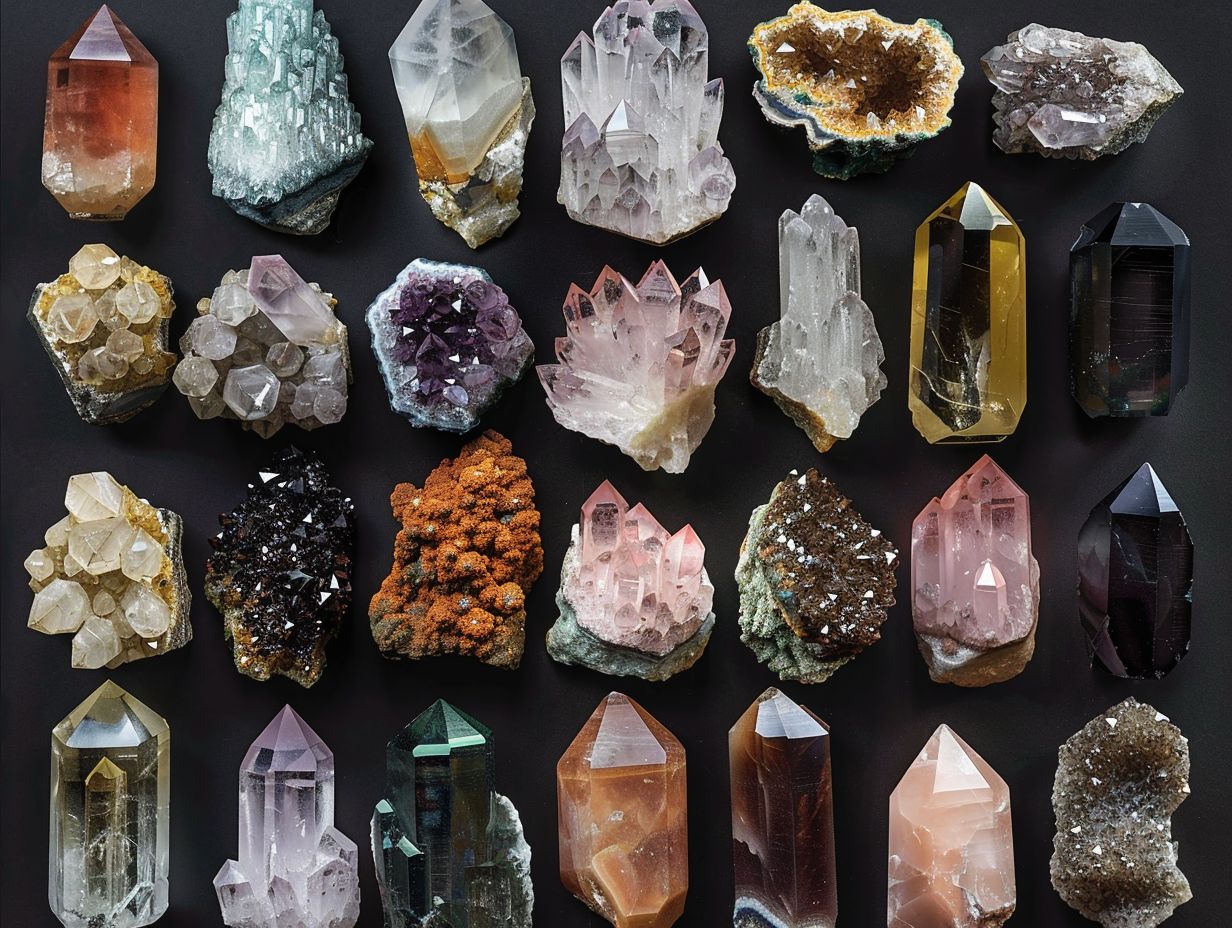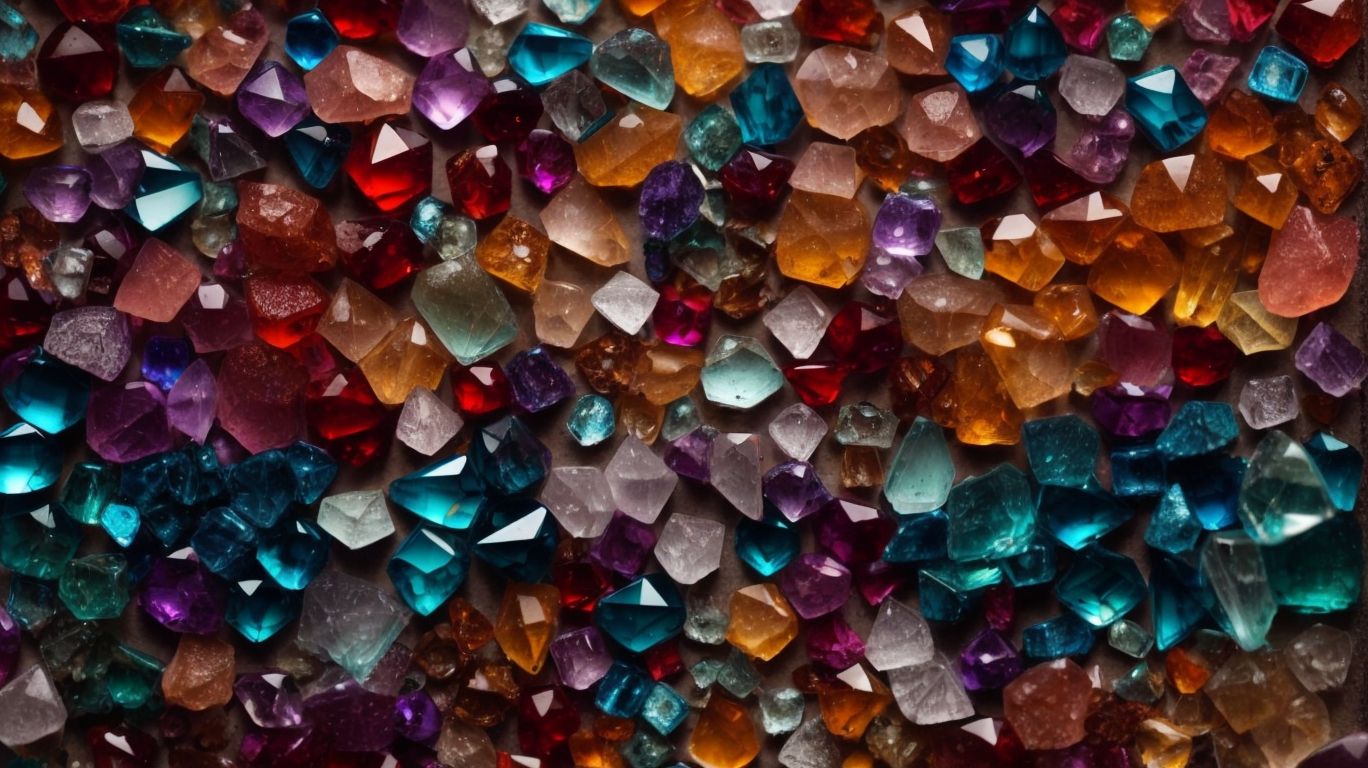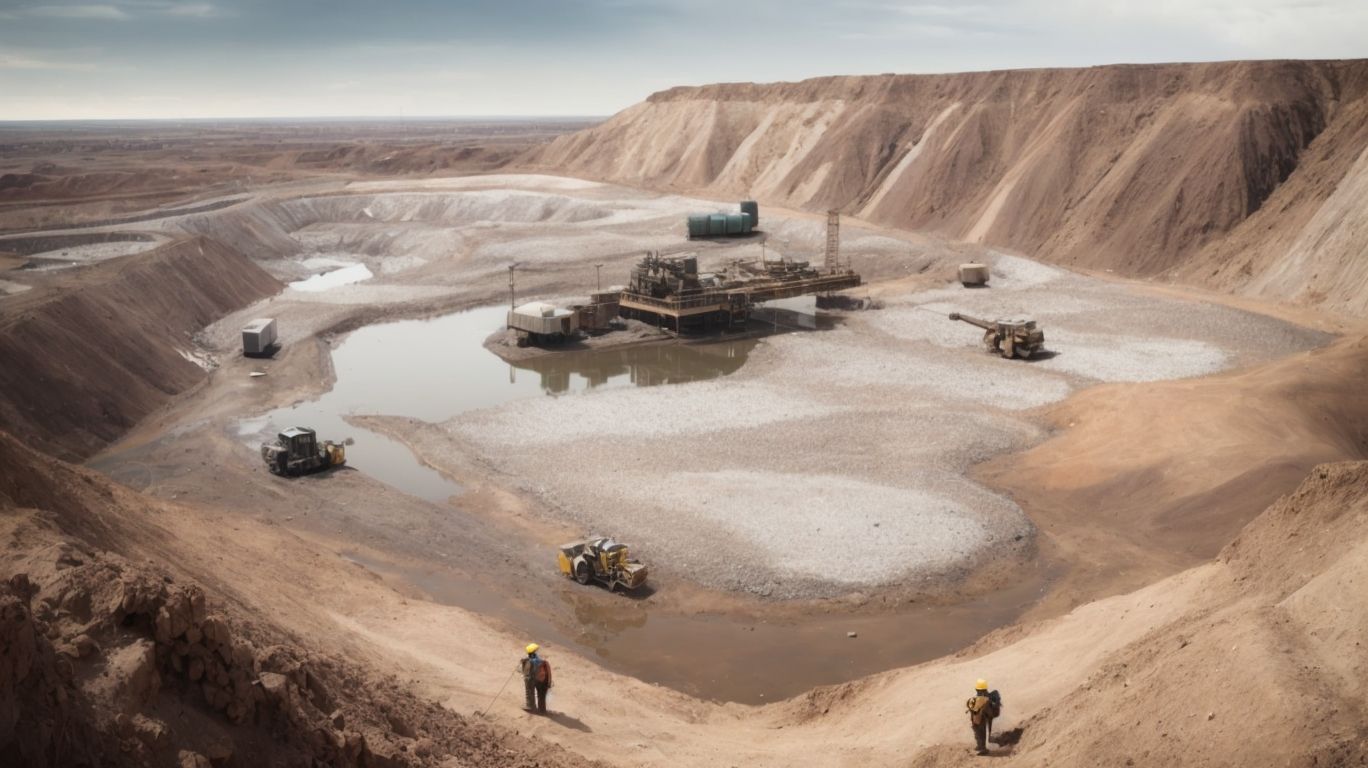
Crystal Mining 101: A Comprehensive Guide
Curious about crystal mining? From the history of this fascinating practice to the types of crystals you can find in mines, this comprehensive guide covers everything you need to know. Discover the most valuable and common crystals, learn about the tools and equipment used in mining, and find out how to locate crystal mines. Plus, get tips on preparing for a mining trip and staying safe while exploring underground. Whether you’re a beginner or a seasoned prospector, this article has something for everyone.
What is Crystal Mining?
Crystal mining involves the extraction of crystals from geological formations using various techniques and tools. It is a comprehensive process that considers the geology of the area, extraction methods, and the properties of the crystals. Crystal mining also explores the aspects of crystal healing and its environmental impact.
During crystal mining, miners typically begin by conducting geological surveys to identify potential crystal-rich areas. Once the suitable location is pinpointed, they employ methods such as open-pit mining or underground mining to extract the crystals. Specialized tools like drills, explosives, and heavy machinery are utilized in the extraction process. The properties of the crystals, such as color, size, and clarity, play a vital role in determining their market value and best end-use. The intertwining of crystal mining with healing practices emphasizes the belief that each crystal possesses unique energies and abilities to promote well-being and balance.
History of Crystal Mining
The history of crystal mining dates back to ancient times when early civilizations discovered and valued crystals for their unique properties. Over the centuries, advancements in geological surveys and exploration techniques have led to the discovery of rich crystal deposits, shaping the modern crystal mining industry.
Ancient mining practices involved manual tools like pickaxes and shovels to extract crystals from deep within the earth’s crust. These civilizations revered crystals for their spiritual significance and healing capabilities, attributing mystical powers to them.
As trade routes expanded, crystals became coveted commodities, fueling the demand for skilled miners. Geological surveys played a crucial role in pinpointing promising locations for crystal mining, using scientific methods to analyze rock formations and mineral compositions.
This marriage of ancient knowledge and modern technology has propelled crystal exploration into a thriving industry, attracting a diverse range of enthusiasts and collectors.
Types of Crystals Found in Mines
Crystal mines yield a diverse range of crystals, each with unique characteristics that aid in their identification and classification. These specimens exhibit various formations and structures, contributing to the vibrant crystal trade and classification within the mining industry.
The assortment found in mines includes popular crystals like amethyst, quartz, and citrine, each prized for their distinct colors and metaphysical properties. From clusters to geodes, these crystals come in a variety of formations that captivate collectors and spiritual practitioners alike. By understanding the differences in crystal structures and compositions, traders can accurately label and market these specimens, catering to the diverse needs of enthusiasts seeking specific energies or aesthetic appeal in their crystal collections.
What are the Most Valuable Crystals?
The most valuable crystals in the market are often rare and unique specimens that require specialized preservation techniques. These crystals are typically sourced from specific geological formations that enhance their rarity and desirability.
These rare and sought-after crystals are meticulously extracted from deep within the Earth’s crust, where the perfect combination of elements and pressures over millions of years results in their exquisite formation.
Factors such as color, clarity, size, and rarity play crucial roles in determining the value of a crystal. Preservation methods, ranging from gentle cleaning to sophisticated storage solutions, are essential to maintain their pristine quality and prevent degradation.
The allure of possessing these precious gems lies not only in their monetary value but also in the energy and metaphysical properties they are believed to possess.
What are the Most Common Crystals?
Common crystals are favored by both enthusiasts and collectors for their widespread availability and diverse applications. These crystals find utility in various practices and are cherished by a wide array of crystal aficionados for their versatility.
- From aiding in meditation and energy healing to enhancing the ambiance of living spaces, common crystals serve multiple purposes.
- Enthusiasts often turn to these crystals for their healing properties, while collectors appreciate them for their aesthetic appeal.
These crystals are utilized in jewelry-making, home decor, and even in the practice of Feng Shui to attract positive energy. The versatility of common crystals allows individuals to incorporate them into their daily routines, making them an integral part of the crystal community’s culture.
Tools and Equipment Used in Crystal Mining
Crystal mining necessitates the use of specialized tools and equipment designed for excavating, handling, and preserving crystals. These tools range from cleaning implements to storage solutions, ensuring the proper care and maintenance of valuable crystal specimens.
- Excavation tools such as rock hammers, chisels, and shovels are crucial for breaking through rock formations and extracting crystals.
- Handling equipment like protective gloves and goggles protect miners during the extraction process.
- Proper maintenance tools like brushes and soft cloths help clean harvested crystals without damaging their delicate structures.
Effective storage practices involve utilizing padded containers or specialized display cases to prevent scratches or chips, maintaining the pristine condition of the crystals for collectors or sale.
Picks and Shovels
Picks and shovels are indispensable tools in crystal mining, facilitating the extraction and harvesting of crystals from rock formations. These implements are essential for rockhounding enthusiasts seeking to uncover hidden crystal treasures.
They play crucial roles in excavation, enabling miners to break through hard rock layers and unearth precious crystals embedded within. The pick is used for more precise work, while the shovel assists in scooping and moving larger quantities of earth and stone. Effective utilization of these tools not only aids in locating crystal formations but also helps miners navigate through rugged terrains, making the exploration process more efficient and rewarding.
Sledgehammers and Chisels
Sledgehammers and chisels play a crucial role in crystal exploration and lapidary work, allowing miners to break through tough rock formations and extract crystals with precision. These tools are essential for lapidary enthusiasts in shaping and polishing crystals.
Their effectiveness lies in their ability to carefully chip away at surrounding rock, revealing hidden crystal pockets and ensuring minimal damage to the specimens. By using a sledgehammer to deliver strong, controlled blows, miners can access crystals nestled within solid rock layers. Chisels, on the other hand, enable precise detailing and fine adjustments during the final stages of crystal refinement, facilitating the creation of stunning and flawless pieces for collectors and hobbyists alike.
Drills and Jackhammers
Drills and jackhammers are vital equipment in the crystal industry, enabling miners to penetrate hard rock formations and access valuable crystal deposits. These powerful tools are instrumental in extracting crystals from challenging geological formations.
They play a crucial role in the exploration and extraction processes, especially when dealing with intricate and hard-to-reach crystal-rich areas. Drills are utilized to create boreholes for assessing the quality and quantity of crystals underground, while jackhammers are essential for breaking down stubborn rock layers. By effectively utilizing drills and jackhammers, miners can not only increase their efficiency in crystal mining operations but also minimize potential damages to the crystals during extraction.
How to Find Crystal Mines?
Locating crystal mines requires a thorough understanding of geological formations and the identification of potential crystal deposits in specific locations. Prospectors often rely on geological surveys and exploration techniques to pinpoint areas rich in crystal resources.
Geological knowledge plays a crucial role in the process of finding crystal mines, as different types of rocks and formations can indicate the presence of valuable crystals. Prospectors pay close attention to the geological composition of an area, looking for specific signs that suggest the likelihood of crystal deposits. By studying the layers of rock, the presence of faults, and the overall structure of the land, experienced miners can narrow down the search to areas with the highest potential for successful crystal mining operations.
Research and Consult Experts
Before embarking on a crystal mining journey, it is essential to conduct thorough research and seek guidance from experts in the field. Engaging in crystal workshops and educational programs can enhance one’s knowledge and skills in the realm of crystal exploration.
By tapping into the expertise of seasoned crystal miners and geologists, individuals can gain valuable insights into the geographical formations that are likely to contain crystals. Understanding the geological processes involved in crystal formation is crucial for successful mining expeditions. Hands-on training through specialized workshops can provide practical experience in identifying different types of crystals and learning how to extract them sustainably. Such immersive experiences not only offer a deeper understanding of the craft but also foster a greater appreciation for the natural wonders hidden beneath the Earth’s surface.
Join a Mining Club
Joining a mining club provides enthusiasts with opportunities to partake in organized crystal excursions and connect with like-minded hobbyists. These clubs offer a supportive community for individuals passionate about crystal mining.
Members of these clubs often find that the camaraderie and friendships formed during group excursions enhance their overall experience. The shared excitement of discovering new crystals together creates unforgettable memories and fosters a sense of belonging within the community.
Club activities often include informative workshops and guest speaker events, where members can deepen their knowledge of crystal identification techniques and geological processes. By participating in club-led excursions to various mining sites, hobbyists have the chance to access exclusive locations, expanding their collection and expertise in crystal mining.
Use Online Resources
Online resources serve as valuable platforms for crystal enthusiasts and aficionados to access information, connect with fellow enthusiasts, and stay updated on the latest trends in the crystal mining community. These resources offer a wealth of knowledge and networking opportunities for enthusiasts.
They provide a centralized hub where individuals can delve into the geological aspects of crystal formations, learn about sustainable mining practices, and discover the metaphysical properties associated with different types of crystals.
Online platforms foster a sense of community among enthusiasts by facilitating discussions, sharing of personal experiences, and showcasing collections. Websites like Mindat.org, forums such as Crystal Vaults, and social media groups like Crystal Lovers Unite are popular destinations for those seeking to deepen their understanding of crystals and engage with like-minded individuals.”
How to Prepare for a Crystal Mining Trip?
Preparing for a crystal mining trip involves gathering essential supplies, ensuring the availability of safety equipment, and dressing appropriately for the terrain. Proper preparation is key to a safe and successful mining expedition.
- Before embarking on your adventure, make sure to pack a sturdy backpack to carry your tools, a reliable headlamp, and plenty of water to stay hydrated throughout the day.
- Don’t forget to bring a first aid kit, sunscreen, and insect repellent to protect yourself against potential hazards while mining.
- Wearing durable work gloves and sturdy hiking boots will help shield your hands and feet from sharp rocks and rough terrain. Remember, comfort and safety should be your top priorities when selecting your mining attire.
Gather Necessary Supplies
Before setting out on a crystal mining trip, it is crucial to gather the necessary supplies for harvesting and maintaining crystals. Sustainability practices should be emphasized to minimize environmental impact during mining activities.
Choosing the right tools is essential for successful crystal harvesting. A sturdy rock hammer or chisel can help extract crystals from rocks, while a brush and dustpan are useful for cleaning and collecting specimens. Having containers like plastic bags or small boxes to store the crystals safely is crucial. Protective gear such as gloves and safety goggles should also not be overlooked to ensure personal safety during the mining process.
By adopting sustainable practices, such as filling in holes and minimizing disturbance to surrounding plants and wildlife, crystal enthusiasts can contribute to the longevity of crystal-rich environments.
Dress Appropriately
Choosing the right attire for a crystal mining trip is critical to ensuring personal safety and minimizing the environmental impact of mining activities. Proper clothing and footwear can enhance comfort and protection during the expedition.
When planning your outfit for a crystal mining excursion, opt for durable and breathable clothing that allows for freedom of movement. Long pants and sleeves can shield you from sharp rocks and branches, while sturdy closed-toe shoes with good traction are essential for navigating uneven and slippery terrains. Wearing a hat and sunscreen can protect you from the sun’s rays in open mining areas. By dressing appropriately, you not only safeguard yourself but also contribute to preserving the integrity of the mining site for future visitors.
Bring Safety Equipment
Safety equipment is essential for crystal mining trips to safeguard against potential hazards and ensure the well-being of individuals. In addition to protective gear, equipment for crystal cleaning should be included to maintain the quality of harvested specimens.
Proper protective gear such as helmets, goggles, gloves, and sturdy footwear are crucial to protect miners from falling rocks, sharp edges, and other dangers commonly encountered in mining operations. By wearing these safety essentials, miners can significantly reduce the risk of injuries.
Having the right cleaning tools like soft brushes, microfiber cloths, and gentle cleaning solutions is vital to ensure that the crystals are well-preserved without causing any damage to their natural beauty and shine.
Safety Precautions in Crystal Mining
Safety precautions are paramount in crystal mining operations to protect miners from potential risks and hazards. Wearing appropriate protective gear, adhering to mining regulations, and maintaining awareness of one’s surroundings are essential for a safe mining experience.
- The protective gear should include items like helmets, gloves, safety goggles, and sturdy boots to shield miners from falling debris and sharp crystals.
- Miners must ensure they have proper ventilation in underground mines to prevent exposure to harmful gases.
- It is crucial to consistently check equipment for any signs of damage and to never overlook the importance of regular safety inspections.
- Being vigilant and alert in identifying unstable areas or potential dangers within the mining site can prevent accidents and uphold a safe working environment.
Wear Protective Gear
Donning appropriate protective gear, such as helmets, gloves, and goggles, is crucial in crystal mining to shield against potential injuries and hazards. Proper storage solutions should also be considered to protect harvested crystals during transportation.
Wearing helmets ensures head protection from falling debris, gloves shield hands against sharp edges and chemicals, while goggles safeguard the eyes from dust and particles. In addition to personal safety, using safety harnesses when working at heights and sturdy boots to prevent slips are equally important.
After extraction, employing proper storage methods like padded containers or foam lining helps maintain the integrity and aesthetics of crystals, preventing scratches or damage before they reach market or collection sites.
Be Aware of Surroundings
Maintaining awareness of one’s surroundings is essential in crystal mining to avoid accidents and adhere to mining regulations. Understanding the geological context and heeding crystal lore can enhance safety and appreciation of the mining environment.
By being observant of the changing terrain, miners can adapt their methods to suit the specific conditions, ensuring a more efficient and sustainable mining process. Respecting the land and its natural formations not only promotes environmental conservation but also honors the profound history and significance that crystals hold within these landscapes.
Integrating traditional beliefs and rituals into mining practices fosters a deeper connection with the earth, creating a sense of harmony and reverence that transcends mere extraction activities.
Follow Mining Regulations
Adhering to mining regulations is crucial for sustainable crystal mining practices that minimize the environmental impact and protect the integrity of crystal deposits. Consideration of crystal metaphysical properties can also guide ethical mining practices.
By following these regulations, miners can ensure that their operations do not harm the surrounding ecosystems or compromise the spiritual significance of the crystals being extracted. This alignment between regulatory compliance and metaphysical understanding underscores the importance of approaching mining activities with a holistic perspective that respects both the physical and energetic aspects of the Earth’s resources. Emphasizing ethical mining practices rooted in environmental conservation and reverence for the sacred qualities of crystals can lead to a harmonious coexistence between industry and nature.




No Comments